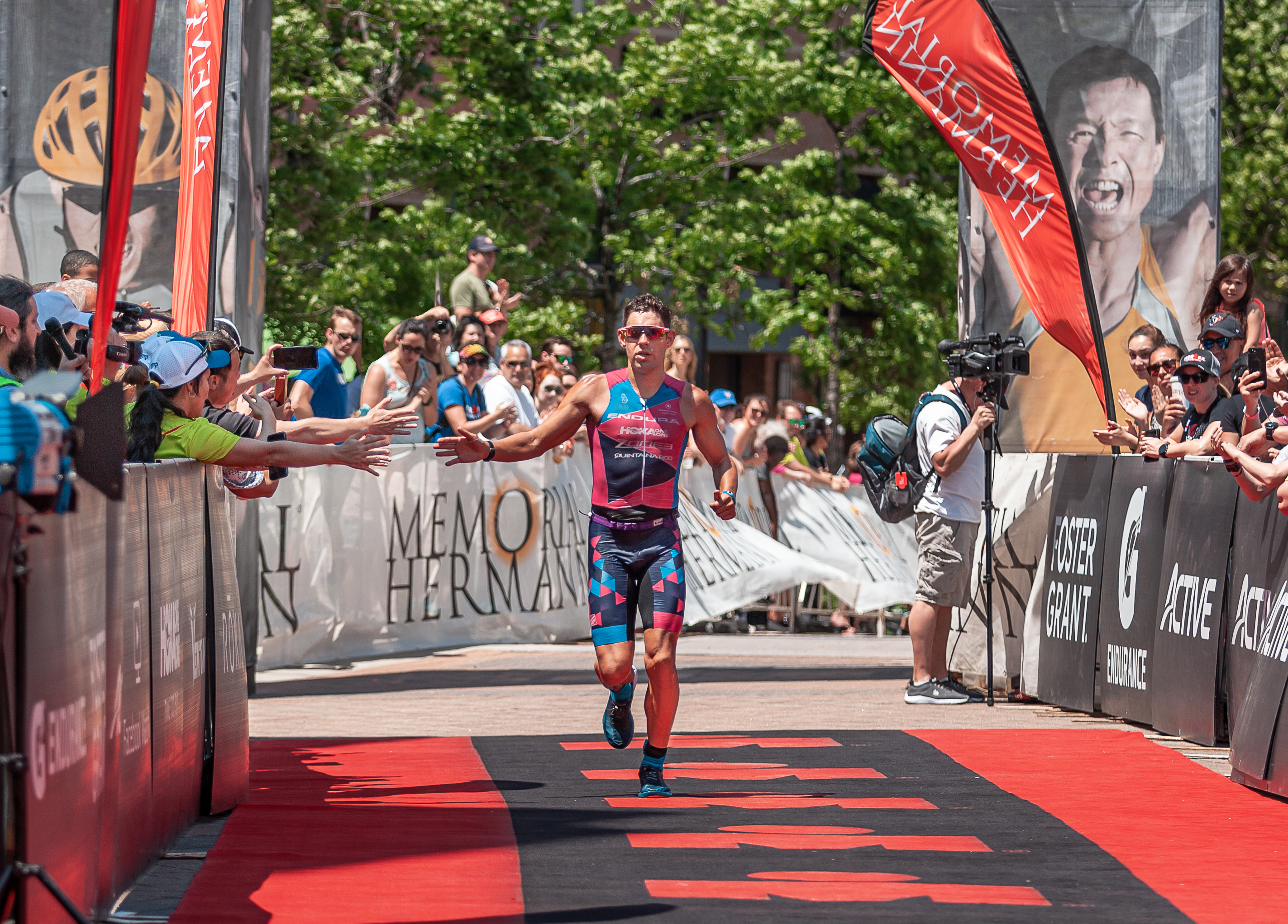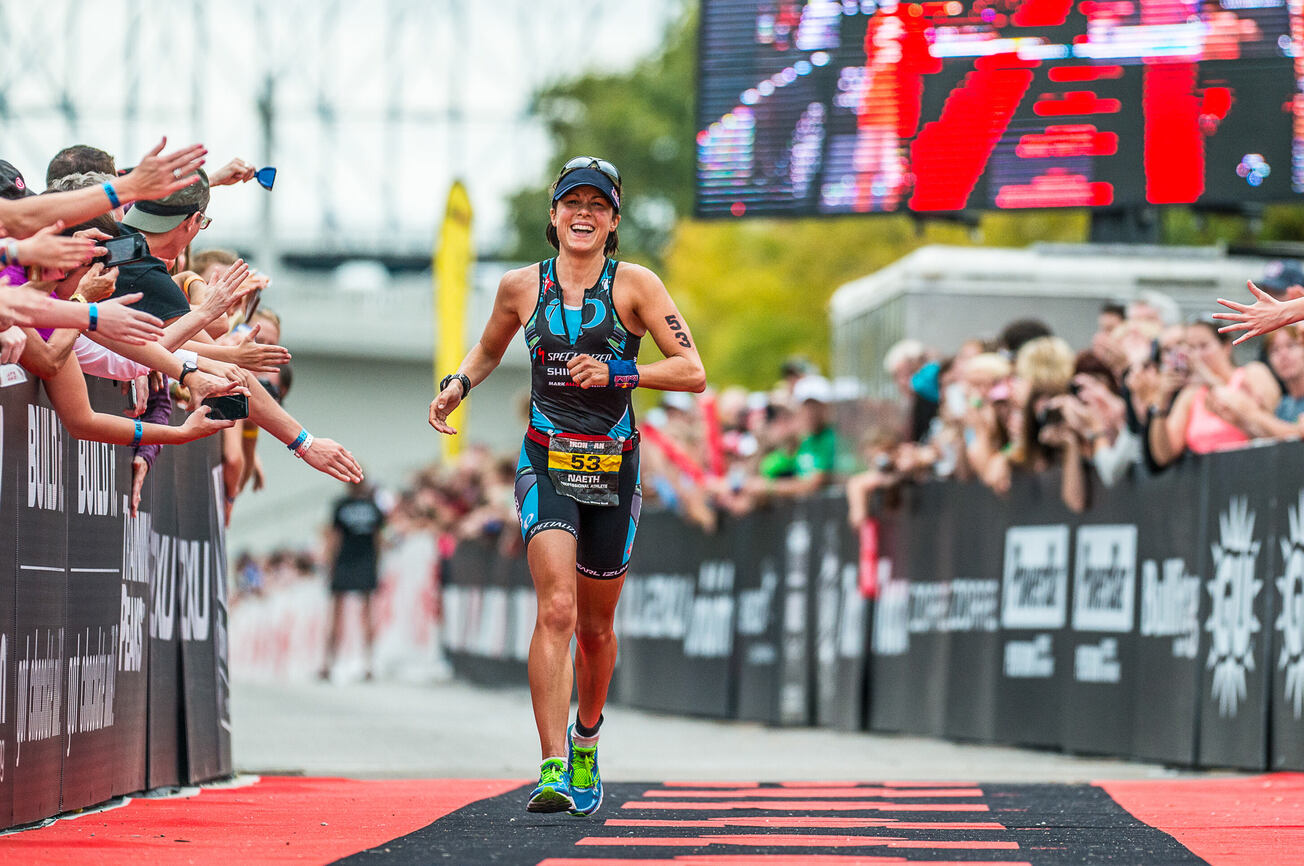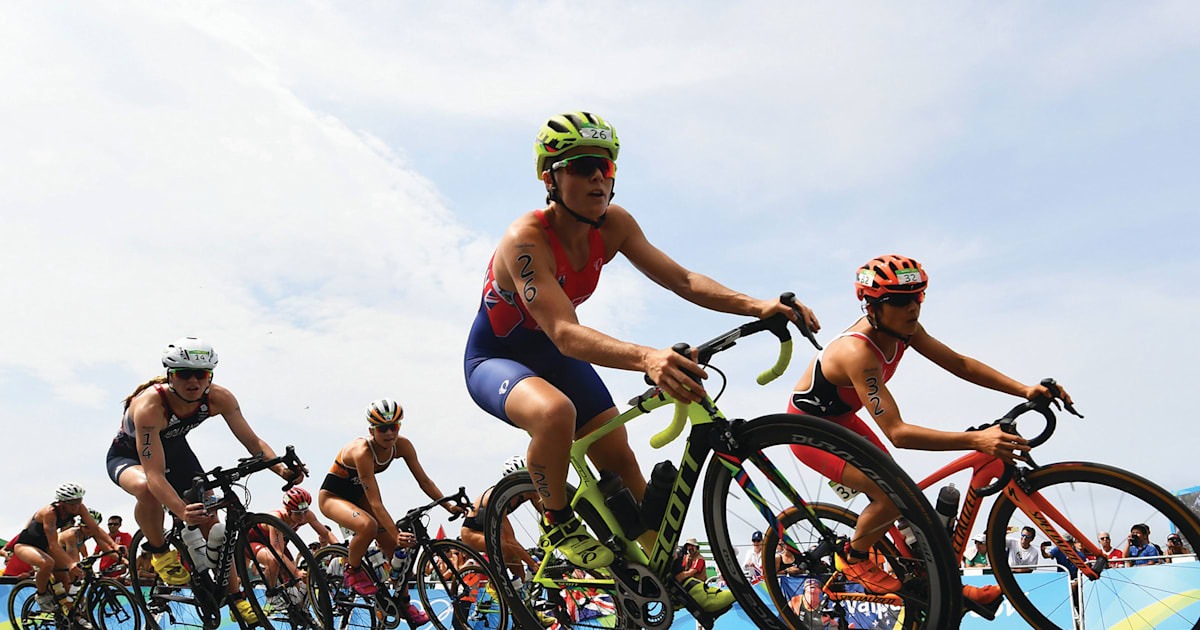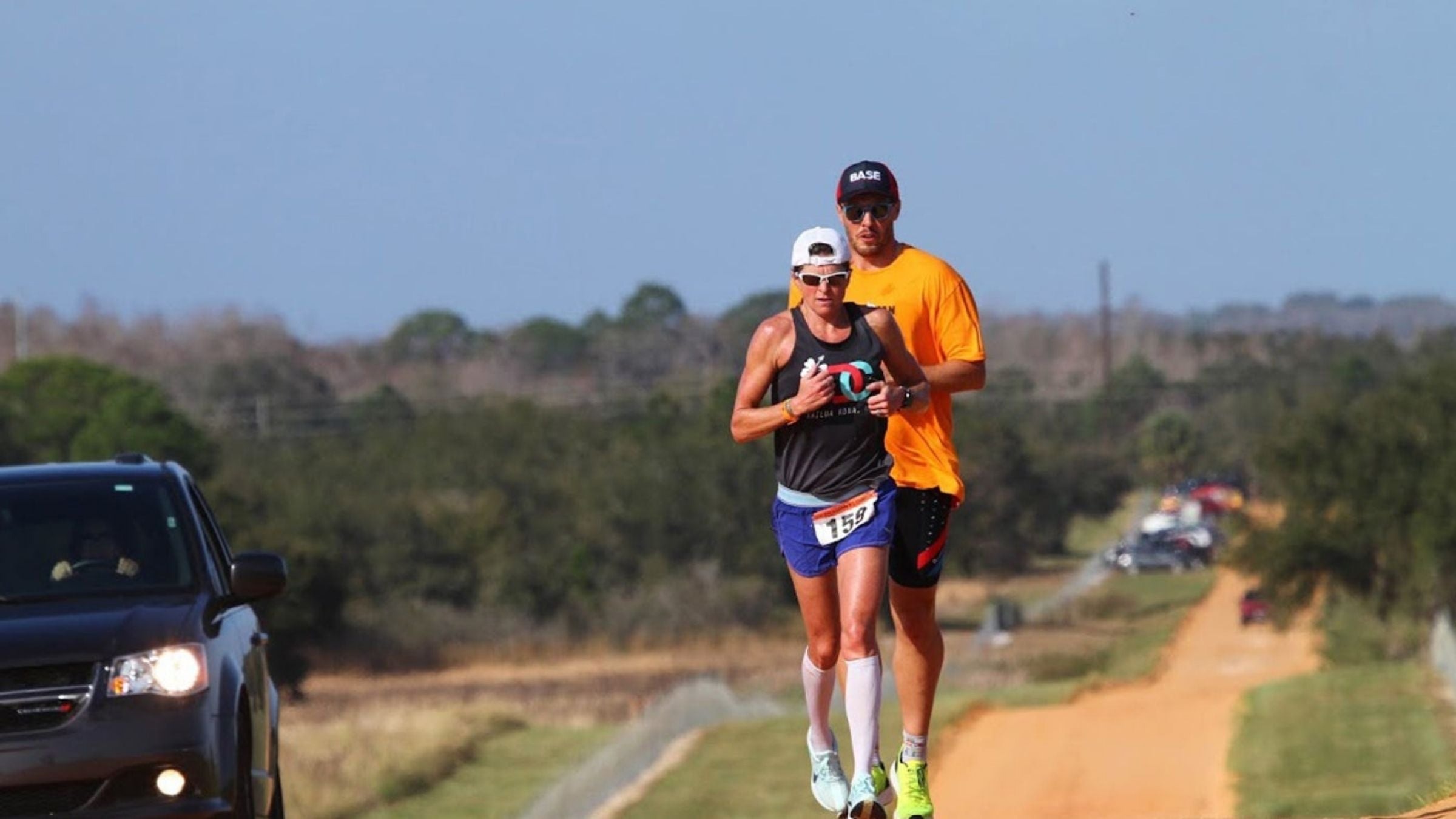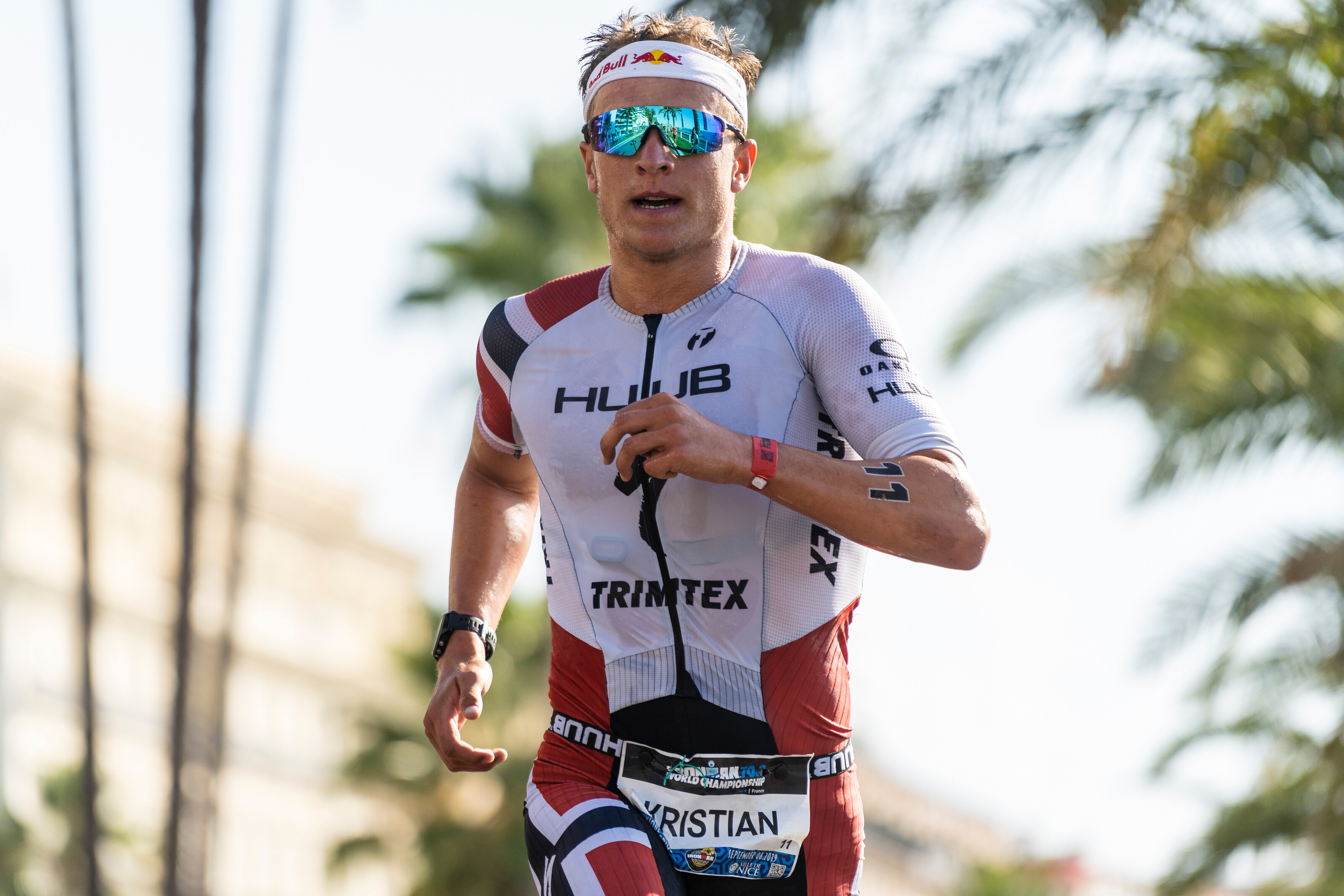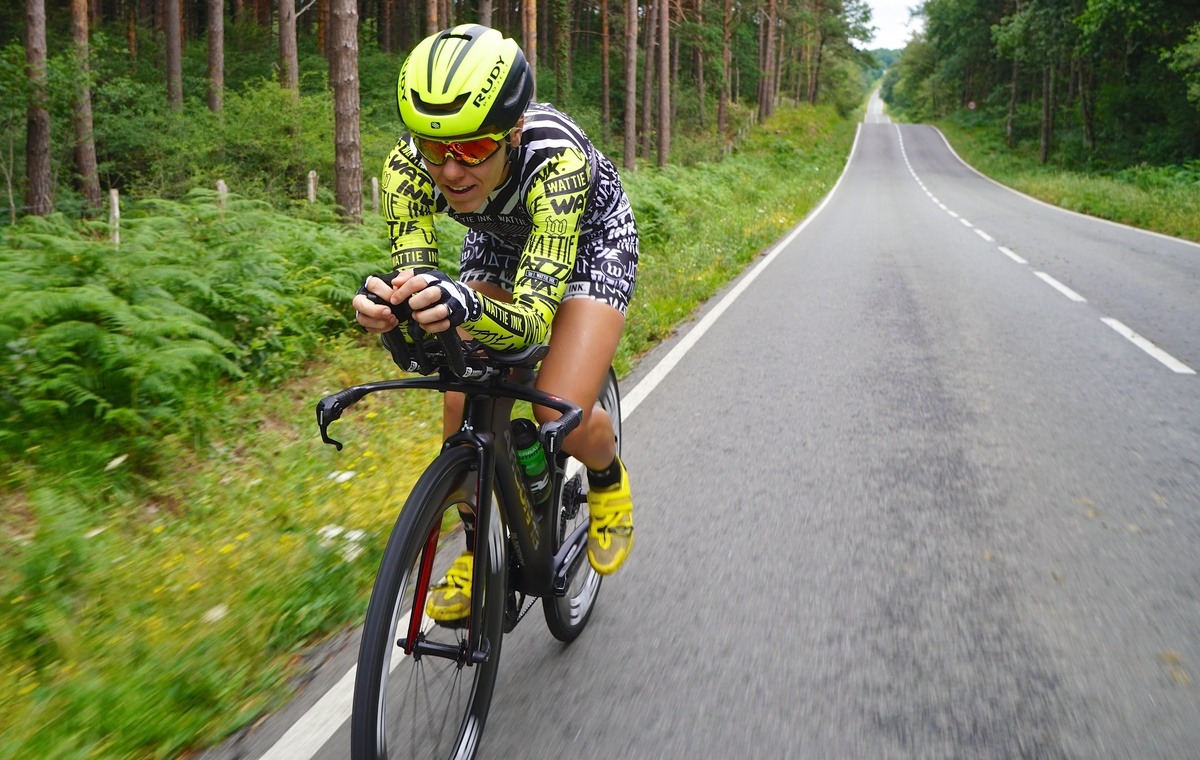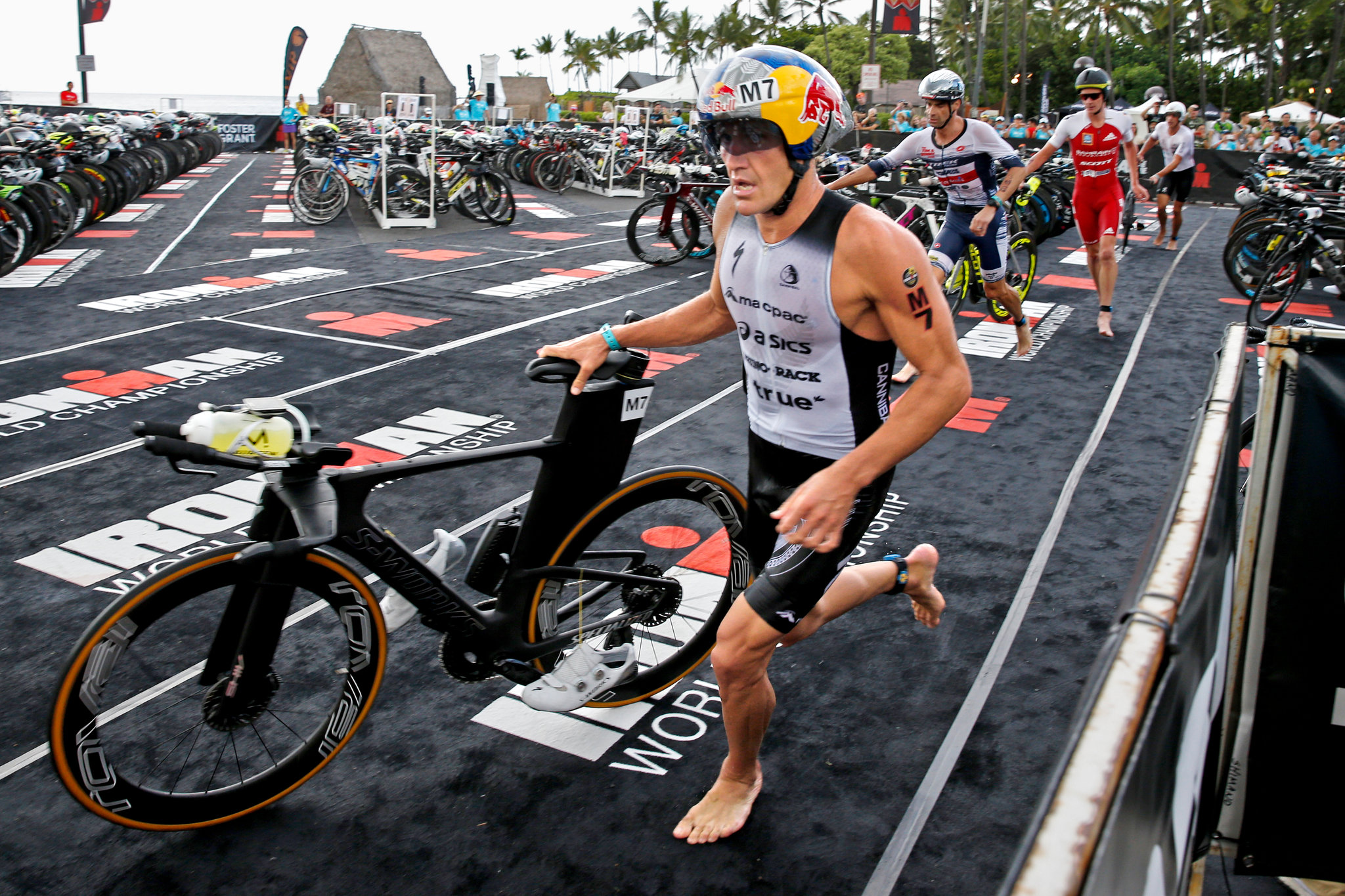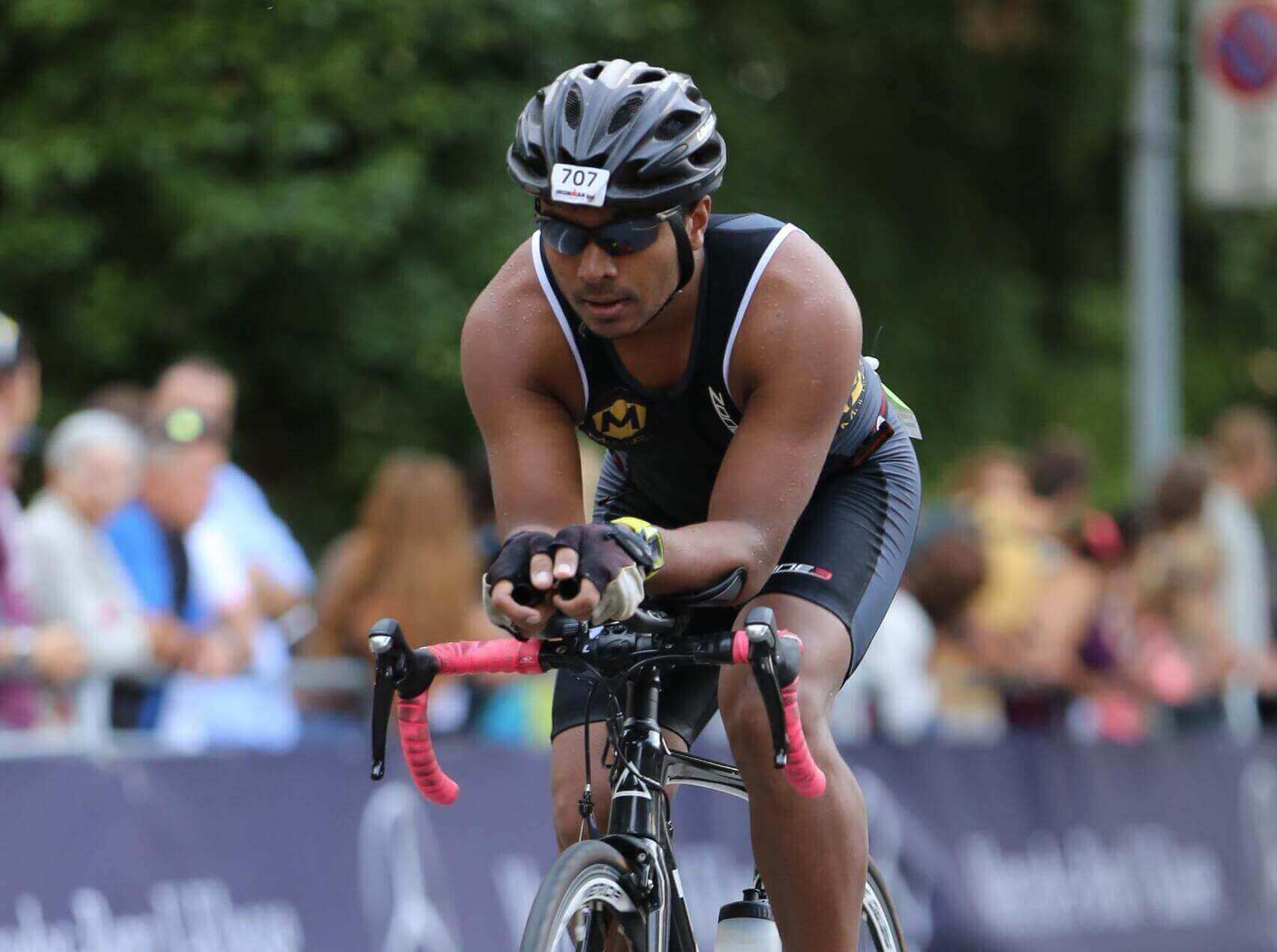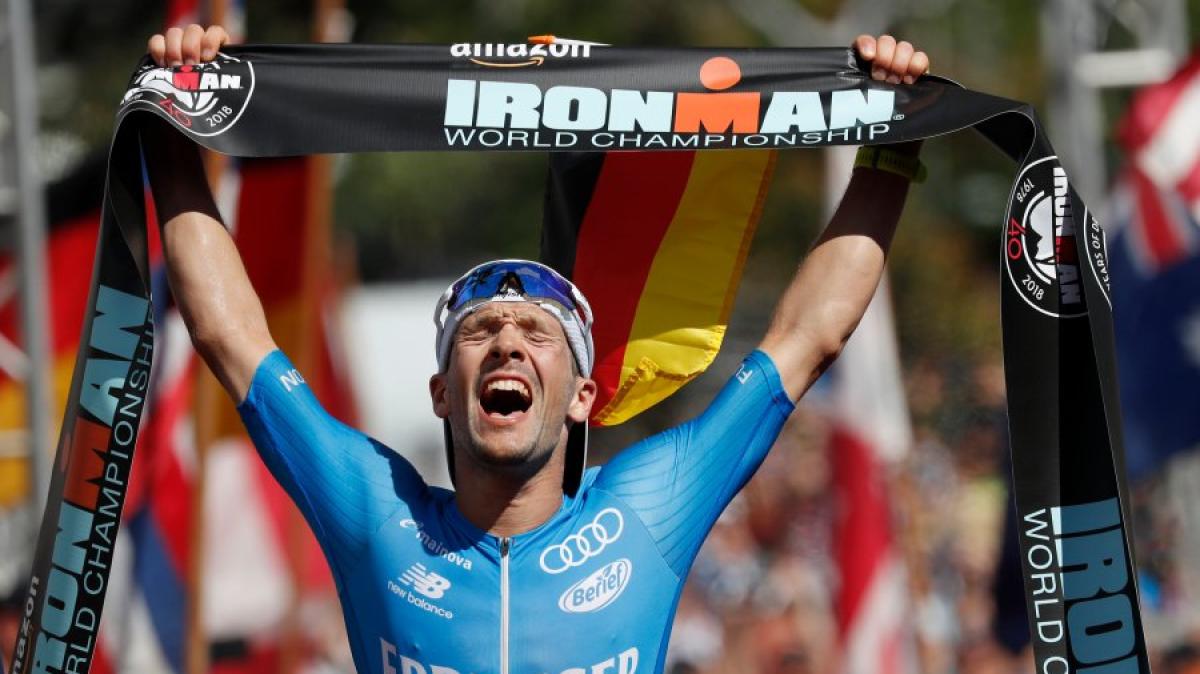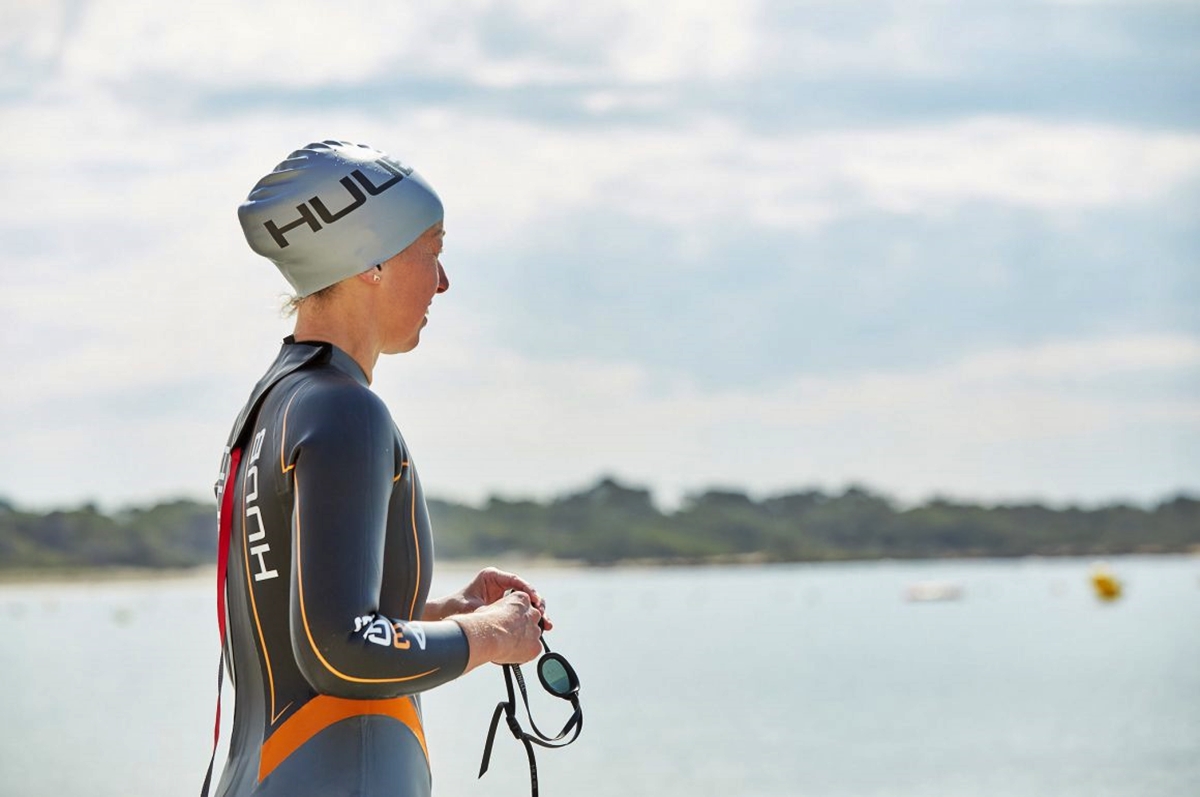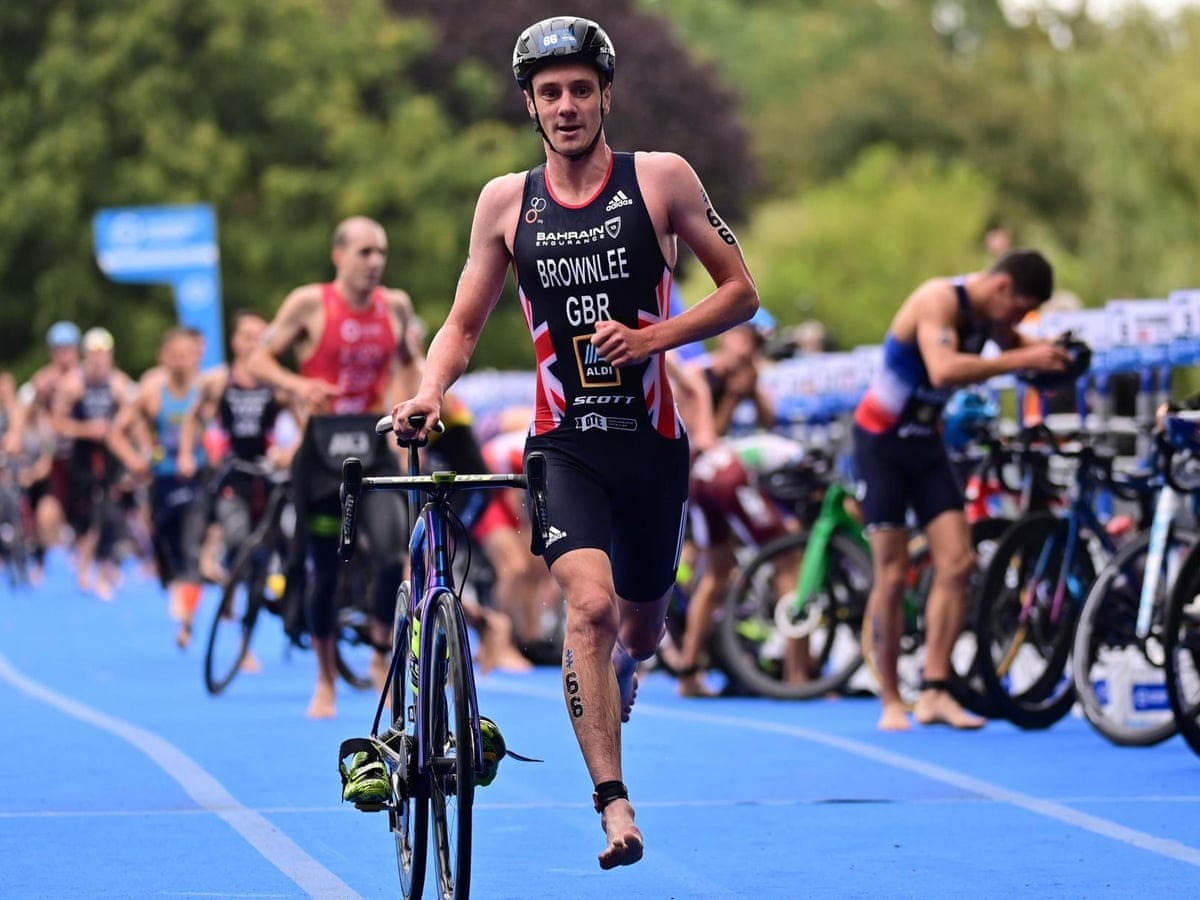

Featured
What Do You Do In Ironman Triathlon
Modified: January 2, 2024
Discover what participants do in the Ironman Triathlon, a grueling endurance race featuring swimming, cycling, and running. Explore the physical and mental challenges and strategies involved in this featured event.
Introduction
Welcome to the world of Ironman triathlon, where athletes push themselves to the limits of endurance and determination. The Ironman triathlon is one of the ultimate tests of physical and mental strength, combining three grueling disciplines into a single race. Participants swim 2.4 miles, bike 112 miles, and then run a full marathon of 26.2 miles.
The Ironman triathlon is not for the faint-hearted. It requires months of dedicated training, a disciplined mindset, and meticulous preparation. Athletes participating in this iconic event put their bodies and minds through an incredible challenge, pushing beyond their comfort zones and achieving feats they once thought impossible.
The origins of the Ironman triathlon date back to 1978 in Hawaii, where a debate arose among athletes to determine who was the fittest – swimmers, cyclists, or runners. To settle the argument, the race director decided to combine all three disciplines into a single event. The first Ironman triathlon saw 15 participants take on the challenge, and it has since evolved into a global phenomenon with thousands of athletes competing in races all over the world.
Participating in an Ironman triathlon requires a high level of commitment, both physically and mentally. Athletes spend countless hours swimming, biking, and running, honing their skills and building their endurance. They follow structured training plans, gradually increasing their distances and intensity to prepare for the rigors of race day.
While each discipline – swimming, biking, and running – presents its own unique set of challenges, the true test of an Ironman triathlon lies in the transitions between each leg. Athletes must efficiently navigate the swim-to-bike and bike-to-run transitions, ensuring they have everything they need for the next stage without wasting precious time.
Throughout this article, we will delve deeper into the swim, bike, and run portions of the Ironman triathlon, as well as explore the transition areas, mental challenges, nutritional strategies, training and preparation, and recovery considerations. Join us as we take an in-depth look at what it takes to conquer the Ironman triathlon and inspire you to embark on your own endurance journey.
Swim Portion of the Ironman Triathlon
The swim portion of the Ironman triathlon is the first leg of the race and often sets the tone for the rest of the event. Participants start with a 2.4-mile open water swim, facing the challenges of waves, currents, and the potential for crowded swimming conditions.
Swimming in open water can be an intimidating experience for many triathletes, especially those who are used to pool swimming. The absence of lanes and the unpredictable nature of the water adds an extra element of excitement and uncertainty to the race. Strong swimmers may excel in this portion of the race, but even they must contend with the physical demands of swimming for such a long distance without the push-off walls and rest breaks typically found in a pool.
Proper technique and efficient stroke mechanics are essential in the swim portion of the Ironman triathlon. Athletes should focus on maintaining a streamlined body position, with a relaxed but powerful stroke. Bilateral breathing, alternating sides with each breath, can help maintain balance and optimize oxygen intake. It’s crucial to practice open water swimming during training to get comfortable with the different conditions and develop sighting skills to navigate towards buoys and the swim finish.
The swim portion is also where athletes need to be mindful of race etiquette. With large numbers of participants starting the race together, it’s important to be aware of other swimmers and avoid collisions. Finding open space and settling into a comfortable rhythm can make a significant difference in the overall swim experience. Additionally, wearing a brightly colored swim cap can increase visibility and make it easier for race officials to identify athletes in case of an emergency.
For many triathletes, the swim portion is the most challenging and nerve-wracking part of the race. Overcoming the physical and mental obstacles of swimming in open water requires mental strength, focus, and a positive mindset. Visualization techniques and mental rehearsal can be valuable tools to help athletes calm their nerves and stay focused on their swim goals.
As athletes complete the swim portion of the Ironman triathlon, they emerge from the water and transition to the next leg of the race – the bike portion. This transition is a critical component of the race and requires efficient changeovers to minimize time lost and maximize performance in the following stages.
Bike Portion of the Ironman Triathlon
The bike portion of the Ironman triathlon is where athletes put their endurance and biking skills to the test. Following the swim leg, participants transition to their bikes for a challenging 112-mile ride through varied terrain and conditions.
During the bike portion, athletes must navigate hills, descents, wind, and potential changes in weather. Maintaining a steady pace and conserving energy become crucial as participants strive to complete the demanding distance. Staying hydrated and fueling properly is also essential to ensure sustained energy levels throughout the bike leg.
Efficient bike handling and proper pacing can significantly impact race performance in this portion of the triathlon. Athletes should aim to find a balance between pushing their limits and pacing themselves for the remainder of the race. Drafting – riding closely behind other cyclists to reduce wind resistance – is not allowed in Ironman races, so athletes must rely on their own power and strategy to ride strong.
Proper bike fit and equipment selection are equally important in the bike portion. Athletes should ensure their bike is properly adjusted to their body measurements for optimal comfort and efficiency. Investing in a quality bike that suits the course conditions and personal preference can also make a significant difference in the overall race experience.
At aid stations along the bike course, athletes have the opportunity to replenish their hydration and nutrition supplies. It is essential to have a plan in place for fueling during the ride, consuming a mix of carbohydrates, electrolytes, and fluids to sustain energy levels and prevent dehydration. Many athletes use energy gels, bars, and sports drinks to meet their nutritional needs. Practice and fine-tuning this strategy during training can help avoid stomach distress or energy fluctuations during the race.
The bike portion offers athletes the chance to appreciate the scenic views and camaraderie of fellow participants. Encouragement from volunteers, spectators, and fellow triathletes can provide a much-needed boost of motivation during the long ride. It’s important to stay focused, maintain a positive mindset, and stay alert for any potential road hazards or changes in course conditions.
As participants approach the end of the bike portion, they transition to the final leg of the triathlon – the run. The transition from biking to running can be physically and mentally challenging, as the body must adjust to a different set of muscles and movement patterns.
Run Portion of the Ironman Triathlon
The run portion of the Ironman triathlon is often considered the most demanding and mentally challenging part of the race. After completing the swim and bike legs, athletes must take on a full marathon distance of 26.2 miles.
Endurance, mental fortitude, and efficient pacing are key factors in successfully completing the run portion of the Ironman. With hundreds of miles already covered in the swim and bike, fatigue sets in, making it crucial for athletes to manage their energy levels and stay mentally focused.
During the run, athletes must confront physical discomfort, muscle fatigue, and the mental battle of wanting to stop. Developing a strong mental game plan during training can be invaluable in overcoming these obstacles. Techniques such as positive self-talk, visualization, and breaking the run into smaller milestones can help athletes maintain a steady pace and stay motivated.
Hydration and nutrition play a critical role during the run leg. Aid stations are strategically placed along the course, offering water, sports drinks, and fueling options such as gels, bananas, and energy bars. Athletes should have a plan in place for when and how to consume these resources, balancing the need for hydration and replenishing energy stores without causing stomach distress.
The run course in an Ironman triathlon is typically a mixture of challenging terrain, including roads, trails, and possibly hills. Proper footwear is essential to provide cushioning and support throughout the lengthy run. Training on similar terrain and incorporating long runs into the training program can help prepare athletes for the physical demands of the run portion.
Support from the race organizers, volunteers, and spectators can provide a much-needed boost of motivation during the run. The cheers, high-fives, and words of encouragement can help propel athletes forward when their body and mind are begging them to stop. Many athletes also draw inspiration from their family and friends who are on the sidelines, cheering them on every step of the way.
As the finish line approaches, the sense of accomplishment and the realization of completing an incredible physical and mental journey sets in. The run portion is the final test of an Ironman triathlon and crossing the finish line signifies the triumphant completion of this grueling event.
In the next section, we will explore the transition areas in the Ironman triathlon and their importance in the overall race experience.
Transition Areas in the Ironman Triathlon
The transition areas are a critical component of the Ironman triathlon, serving as the central point where athletes switch between disciplines. There are two transition areas – T1, the swim-to-bike transition, and T2, the bike-to-run transition.
T1, or the swim-to-bike transition, is where participants exit the water and prepare for the cycling leg of the race. Time spent in T1 includes changing out of the wetsuit (if worn), getting into cycling gear, and making any necessary equipment adjustments. Efficient and organized transition practices can save valuable time and contribute to a smooth start on the bike.
In T1, it is essential to have a well-organized transition area, with all necessary equipment laid out in a logical and easily accessible manner. Triathletes typically have a transition mat or towel to mark their spot and create a designated area for their gear. Having a checklist beforehand can help ensure that nothing important is forgotten in the rush of the transition. It’s also advisable to practice transitioning from the swim to the bike during training to optimize the process.
T2, or the bike-to-run transition, is where athletes complete the cycling leg and prepare for the final running leg of the race. In T2, participants remove their cycling gear, change into running attire (including shoes), and refuel if needed. Similar to T1, a well-organized transition area and efficient workflow can save valuable seconds or even minutes during this transition.
Both T1 and T2 are high-pressure areas in the race, as athletes strive to move quickly and smoothly through the transition. Practice and familiarity with transition techniques and strategies can greatly contribute to a successful experience. Many triathletes use elastic laces on their running shoes, allowing for quick slip-on and removal during T2. Others may have their race nutrition strategically placed in their transition area for easy access.
During the transitions, it is important to stay focused and minimize distractions. Athletes can benefit from mentally rehearsing their transition process to streamline their movements and minimize any potential errors. It’s crucial to avoid being rushed or flustered during the transitions, as this can lead to mistakes or wasted time.
The transition areas in the Ironman triathlon are not just about changing gear; they also offer an opportunity for athletes to gather their thoughts, mentally prepare for the next discipline, and regain composure. Positive self-talk and a calm mindset can help triathletes transition smoothly and confidently, setting the tone for a successful continuation of the race.
As participants complete their transitions, they continue on to the next leg of the race, whether it be the bike portion after T1 or the run portion after T2. In the following sections, we will explore the training and preparation needed for the Ironman triathlon, as well as the mental challenges that athletes encounter throughout the race.
Training and Preparation for the Ironman Triathlon
Training for an Ironman triathlon is a demanding and rigorous process that requires careful planning, commitment, and dedication. It involves months of consistent training in each discipline – swimming, biking, and running – as well as incorporating strength training and recovery practices into the routine.
When preparing for an Ironman triathlon, it is essential to create a structured training plan that gradually increases the volume and intensity of workouts over time. The training plan should include a balance of swim, bike, and run sessions, as well as rest days for recovery. It is recommended to work with a coach or follow a reputable training program that suits your fitness level and goals.
Swim training should focus on developing proper technique, endurance, and open water skills. Regular pool sessions, as well as open water swims, should be incorporated into the training schedule to simulate race conditions. Biking workouts should include long rides to build endurance, as well as interval sessions to improve speed and power. Running workouts should consist of a mix of long runs, tempo runs, and speed workouts to enhance both endurance and speed.
Strength training should not be neglected during Ironman training. Incorporating exercises that target the key muscle groups used in triathlon – such as the core, legs, and upper body – can help improve overall performance and reduce the risk of injury. Strength training sessions can be done two to three times a week, focusing on exercises like squats, lunges, planks, and upper body resistance exercises.
In addition to the physical aspect, mental preparation is crucial for success in an Ironman triathlon. Developing mental toughness, visualization techniques, and positive affirmations can help athletes overcome challenges and stay focused during the race. Mental strategies such as breaking the race into smaller, manageable sections, and having a race day plan and goals in mind can provide a sense of direction and motivation.
Alongside physical and mental training, proper nutrition and hydration play a vital role in Ironman preparation. It is essential to fuel the body with a balanced diet that includes carbohydrates, proteins, and healthy fats to support training and recovery. During long workouts, practicing fueling strategies and experimenting with different nutrition options can help find what works best for individual needs.
Recovery is equally important in Ironman training. Rest days and active recovery sessions allow the body to repair and adapt to the physical demands of training. Adequate sleep, stretching, foam rolling, and other recovery practices can aid in preventing injuries and optimizing performance.
Lastly, it’s essential to participate in smaller triathlon races or build up to longer distances before attempting an Ironman. These races provide valuable race-day experience, teach pacing strategies, and help identify areas for improvement.
By following a well-structured training plan, staying consistent, focusing on both physical and mental preparation, and taking care of recovery, athletes can be better equipped for the grueling challenge of an Ironman triathlon.
Mental Challenges in the Ironman Triathlon
The Ironman triathlon is not just a test of physical endurance; it also presents athletes with numerous mental challenges throughout the race. Overcoming these mental hurdles is crucial to successfully completing the race and achieving personal goals.
An Ironman triathlon is a long and arduous event, both physically and mentally. Athletes may experience moments of doubt, fatigue, and discomfort that can make it tempting to give up or settle for less. The ability to stay mentally tough and push through these challenges is what sets successful athletes apart.
One of the mental challenges in an Ironman triathlon is overcoming the fear and anxiety associated with each discipline. For some, open water swimming can be intimidating, especially with the presence of waves, currents, and the prospect of swimming alongside other athletes. Maintaining a calm and focused mindset is essential to navigating the swim leg successfully.
The bike portion presents its own set of mental challenges. Athletes may encounter strong headwinds, difficult climbs, or long stretches of monotonous road. Staying motivated and mentally engaged during these moments requires mental resilience and the ability to stay focused on the ultimate goal.
As participants transition to the run portion, mental fatigue can start to set in. The body is tired, muscles ache, and the finish line seems far away. Maintaining a positive mindset and breaking the run into smaller, more achievable goals can help overcome mental fatigue and keep athletes moving forward.
In an Ironman triathlon, athletes also need to manage their mental energy and avoid burning out too early in the race. Pace and race strategies play a crucial role in maintaining mental focus and preventing a mental and physical breakdown later in the race. Proper planning and pacing can ensure that athletes have enough mental resiliency to tackle the final stages of the race.
Another common mental challenge in an Ironman triathlon is dealing with unexpected or adverse race conditions. Weather conditions can change quickly, and unforeseen circumstances such as equipment issues, cramps, or injuries can arise. Being mentally prepared to adapt to these challenges is crucial to maintaining a positive mindset and finding solutions to overcome obstacles.
Mental training and preparation are just as important as physical training in tackling the mental challenges of an Ironman triathlon. Techniques such as visualization, positive self-talk, and mental rehearsal can help athletes stay focused, confident, and motivated throughout the race.
Ironman triathlons are as much a mental battle as they are a physical one. Overcoming mental challenges requires mental strength, resilience, and the ability to break down the race into manageable parts. With the right mindset and mental preparation, athletes can conquer the mental obstacles and emerge victorious at the finish line.
Nutritional Strategies in the Ironman Triathlon
Nutrition plays a vital role in the success of an Ironman triathlon. Proper fueling before, during, and after the race can enhance performance, aid in recovery, and prevent the onset of fatigue or bonking. Developing effective nutritional strategies is essential for athletes aiming to perform their best in this demanding endurance event.
Preparation begins well before race day. In the days leading up to the Ironman triathlon, athletes should focus on consuming a balanced diet with adequate carbohydrates to top off glycogen stores. Hydration is also crucial during this period to ensure optimal water balance in the body.
During the race, athletes need to continuously replenish their carbohydrate and fluid stores to sustain energy levels. Many triathletes rely on a combination of liquid carbohydrates, energy gels, sports drinks, and solid foods to meet their nutritional needs.
Hydration is a key aspect of nutritional strategies during the Ironman triathlon. Athletes should establish a hydration plan that includes both water and electrolyte-based fluids to replace the sodium, potassium, and other minerals lost through sweat. Drinking to thirst and regularly consuming fluids at aid stations throughout the race is important to prevent dehydration.
Carbohydrate intake during the race is vital to maintain glycogen levels and provide a readily available energy source. Many athletes aim to consume around 60-90 grams of carbohydrates per hour through a combination of sports drinks, gels, and solid foods such as energy bars or bananas. It’s crucial to practice this strategy during training to avoid any digestive issues or discomfort on race day.
Timing is also important when it comes to nutrition during an Ironman triathlon. Athletes should aim for regular and consistent fueling throughout the race, spacing out their intake to provide a steady supply of energy. Many athletes follow a schedule, taking small amounts of nutrition at specific intervals, such as every 15-20 minutes.
It’s important to note that nutrition requirements can vary from athlete to athlete. Finding what works best for an individual may require experimentation and adjustments. It’s recommended to train with different nutrition options and seek advice from sports nutrition professionals to develop a personalized plan.
Post-race nutrition is crucial for recovery. Consuming a mix of carbohydrates and protein within the first 30-60 minutes after the race helps replenish glycogen stores and kickstart the recovery process. This could include a recovery drink, a balanced meal, or a combination of both.
Overall, the key to effective nutritional strategies in the Ironman triathlon is finding the right balance of carbohydrates, fluids, and electrolytes to sustain energy levels and support the body’s needs throughout the event. Each athlete should experiment during training to determine their unique nutritional requirements and develop a plan that works best for them.
Recovery and Post-Race Considerations in the Ironman Triathlon
Recovery is a critical component of the Ironman triathlon journey. After pushing the limits of endurance and completing the race, it is important for athletes to prioritize their recovery to facilitate optimal physical and mental healing.
Immediately after crossing the finish line, it’s essential to rehydrate and refuel the body. Consuming a mix of carbohydrates and protein within the first 30-60 minutes helps replenish glycogen stores and kickstart the recovery process. Recovery drinks or shakes specifically formulated for post-race nutrition can be a convenient option.
Rest and sleep play a crucial role in the recovery process. Adequate sleep allows the body to repair damaged tissues and recharge for future training. Napping or getting a good night’s sleep within the first 24 hours after the race is particularly beneficial for recovery.
Gentle active recovery exercises, such as light swimming, easy cycling, or walking, can help stimulate blood flow and reduce muscle soreness. Engaging in low-impact activities also helps flush out metabolic waste products and aids in the recovery process.
During the recovery period, it’s important to listen to the body and prioritize rest. Taking the time to relax, unwind, and reflect on the accomplishment of completing an Ironman triathlon is essential for both mental and physical rejuvenation.
Massage therapy and foam rolling can provide additional benefits for recovery. These techniques help release muscle tension, reduce inflammation, and expedite the healing process. Seeking the support of a professional sports massage therapist who specializes in post-endurance event recovery can be beneficial.
In the days and weeks following the race, gradually easing back into training is recommended. The body needs time to fully recover from the demands of an Ironman triathlon, and pushing too hard too soon can lead to burnout or injury. A gradual return to training, with a focus on active recovery and lighter workouts, allows the body to rebuild strength and resilience.
Mental recovery is just as important as physical recovery. Reflecting on the experience, celebrating the achievements, and setting new goals can help athletes transition from the demands of the race to their post-race journey. Engaging in activities that bring joy and relaxation can also aid in the mental recovery process.
Post-race considerations also include evaluating the race performance and identifying areas for improvement. Reflecting on training and race execution helps athletes learn from their experiences and make adjustments for future events. Working with a coach or seeking feedback from experienced triathletes can provide valuable insights for growth and development.
Finally, taking care of oneself emotionally and mentally is vital. It’s common for athletes to experience post-race blues or a sense of emptiness after crossing the finish line. Staying connected with fellow triathletes, engaging in hobbies, and setting new goals can help navigate the post-race transition and maintain a positive outlook.
Recovery and post-race considerations are integral to the Ironman triathlon journey. Prioritizing rest, nutrition, and self-care after the race contributes to long-term health, sustained motivation, and continued success in future endeavors.
Conclusion
The Ironman triathlon is undoubtedly one of the most challenging endurance events in the world. Completing a 2.4-mile swim, 112-mile bike ride, and a full marathon of 26.2 miles requires incredible physical and mental strength, unwavering determination, and meticulous preparation.
Throughout this article, we have explored the various aspects of the Ironman triathlon, from the swim, bike, and run portions to the transition areas, training, mental challenges, nutritional strategies, and recovery considerations. Each discipline presents its own unique set of challenges, and successfully completing the race requires a harmonious balance of athleticism, strategy, and mental fortitude.
Training and preparation are key to conquering the Ironman triathlon. Athletes must dedicate countless hours to swim, bike, and run sessions, ensuring they build endurance, improve technique, and strengthen their bodies. Mental training is equally important, as athletes must overcome fear, doubt, and fatigue to push through the demanding race.
Nutrition and hydration play a vital role in sustaining energy levels and supporting performance throughout the race. Proper fueling before, during, and after the event is crucial for optimal functioning and recovery. Establishing personalized nutritional strategies based on individual needs and preferences can enhance race-day performance.
Recovery and post-race considerations are essential for allowing the body and mind to heal and rejuvenate. Prioritizing rest, nutrition, and self-care after the race helps prevent injury, reduce fatigue, and ensure long-term health and sustained motivation for future endeavors.
The Ironman triathlon is not just a physical test; it is a transformative journey that pushes participants to their limits and reveals the depths of their perseverance. With proper training, mental fortitude, and a support system of fellow athletes, coaches, and loved ones, crossing the finish line in an Ironman triathlon is an achievement to be celebrated and treasured for a lifetime.
Whether you’re a seasoned triathlete or an aspiring endurance athlete, the Ironman triathlon offers an opportunity to surpass personal boundaries, discover inner strength, and embrace the true spirit of human endurance. Dare to dream, put in the work, and join the elite ranks of Ironman finishers.
